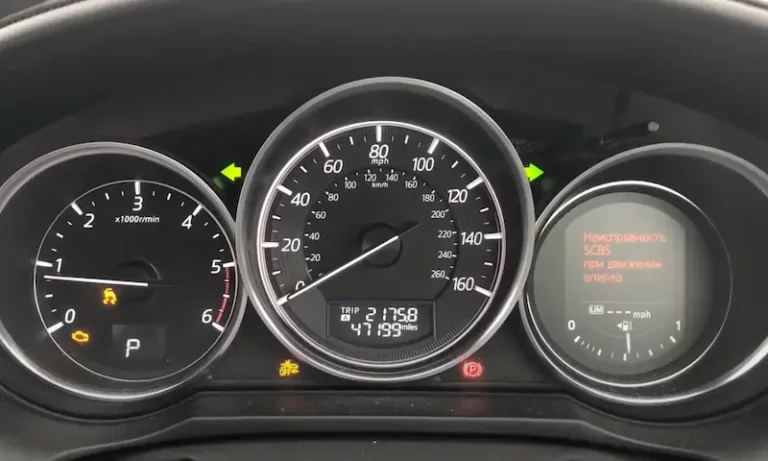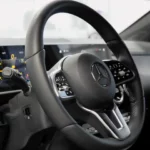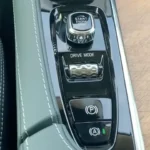The Mazda Dynamic Stability Control, in conjunction with the ABS and TCS (Traction Control System), is responsible for adjusting engine torque and brakes to improve control in slippage when driving. In addition, the DSC will be activated when the vehicle’s speed is greater than 20 km/hr.
However, there are a couple of reasons why your Mazda DSC may malfunction and trigger the DSC and ABS warning light.
But before we examine some of the causes and fixes of this malfunction, we will discuss the function of the Mazda DSC in the car.
What is the Mazda Dynamic Stability Control?
Dynamic Stability Control (DSC) plays a vital role in car safety, especially in bad driving conditions.
It is designed to automatically detect potential loss of control and intervene by controlling the braking system and adjusting the engine torque distribution to the wheel.
Furthermore, it does this via specific parameters, including data from the wheel speed sensor, steering angle, acceleration, etc.
By comparing the data from the sensors and the driver’s intended input, the DSC module can quickly identify situations of deviation.
While this DSC helps improve driving experience and safety, it does not substitute for safe driving and human initiative when driving.
The following condition must be met for the DSC to function correctly:
- Tires must be the correct size specified by the Mazda manufacturer
- Use tires from the same brand and pattern on all four wheels.
- Avoid mixing old worn-out tires with new ones.
Not fulfilling the listed requirement may be responsible for the DSC malfunction in your Mazda.
What are the Causes of the Mazda DSC Malfunction?
The Dynamic Stability Control malfunction can be easily identified with the cluster instrument’s DSC or TCS warning light.
In addition, the light may stay on for a few seconds after the car’s ignition, after which it goes off. It does not indicate something is wrong with the vehicle.
Also, the light may flash while driving the car. It means that the DSC is in operation at that moment.
However, when the light stays on, it shows a problem with the DSC, braking system, and TCS.
The following are some of the causes of the malfunction with the system:
1. Sensor Issues
The DSC relies on data from many sensors in the Mazda. These sensors include the wheel speed sensor, steering wheel sensor, yaw rate sensor, brake pressure sensor, Abs sensor, and more. When one of these sensors malfunctions, it indirectly affects the DSC, which relies on their data.
2. Wheel Speed Discrepancies:
As established above, the DSC relies on specific sensors, including wheel speed sensors. It compares the rotational speeds of individual wheels to the threshold to ascertain slips or lock-ups of the wheel. Discrepancies in wheel speed readings may be caused by a worn-out brakes pad or issues with the ABS.
3. Faulty Components
Components, including the ECU, actuator, or hydraulic control unit, are relied on by the DSC system. When they fail, it disrupts the standard operating system and triggers the check engine warning light and the DSC malfunction.
4. Software glitch
It could be possible the DSC malfunction and warning light are caused by a software glitch rather than any damaged components. In such instances, a software update and calibration will fix the malfunction.
5. Extreme Weather conditions
Extreme weather conditions can temporarily cause the DSC to be triggered. Heavy snowing, rain, or icy road can significantly affect vehicle stability and traction, causing the DSC to engage and difficulty interpreting the sensor’s data frequently. For instance, rapid changes in wheel speed sensor data may cause inconsistent traction and problem in choosing the appropriate car balance strategy.
How do you switch off the DSC in your Mazda?
The Dynamic Stability Control gives your vehicle the best traction to drive well on slippery surfaces.
However, there are situations when you may want to switch off the DSC feature on your car. For instance, driving on freshly fallen snow may be difficult because accelerating will not increase engine power.
You can turn off the DSC and traction control via a button on the dashboard. The button should be held for 10 seconds.
However, you should know that when the vehicle engine is turned off and on again, it is automatically activated, and you would need to turn it off via the button.
How do you fix the DSC malfunction in Mazda?
Fixing the DSC warning light on your Mazda requires you to diagnose the cause of the triggered warning. Here are some steps that may be taken to fix a DSC malfunction:
a. Carry out a diagnostic scan: Diagnostic scans help retrieve stored error codes hinting at what may have gone wrong in the car system. It’s the easiest way to find out what went wrong.
b. Inspect components: This includes troubleshooting what components are traceable to the DSC and could have triggered the code—for instance, the wheel speed sensor, ECM, and other components.
c. Replace damaged parts: during troubleshooting and inspection, you may have identified specific parts that have been damaged. Proceed to replace with manufacturer-recommended parts.
d. Software update: Perform software updates that could be causing the glitch. You can install the new software via a certified Mazda auto dealer or technician.
e. Test and verification: Test whether the malfunction has been fixed and the warning lights are off. We recommend taking the car for a 15-25 minutes drive.
How to reset the DSC warning light?
If you still see the error after fixing the identified issue, proceed to reset the DSC system through the following steps:
- Turn the ignition On but do not start the engine
- Turn the wheel to the left completely
- Turn the Ignition to the right, completely
- Turn the ignition off.
- Start the car after a few seconds.
This procedure should automatically turn off the DSC warning light on your instrument cluster.
Conclusion
The Mazda DSC plays an essential role in the safety and drivability of your vehicle. It is responsible for maintaining the vehicle’s stability and preventing it from skidding or losing control. Diagnosing and fixing the DSC malfunction will depend on identifying the causes. Typically it will range from software updates, faulty sensors, wiring connections, and more.













